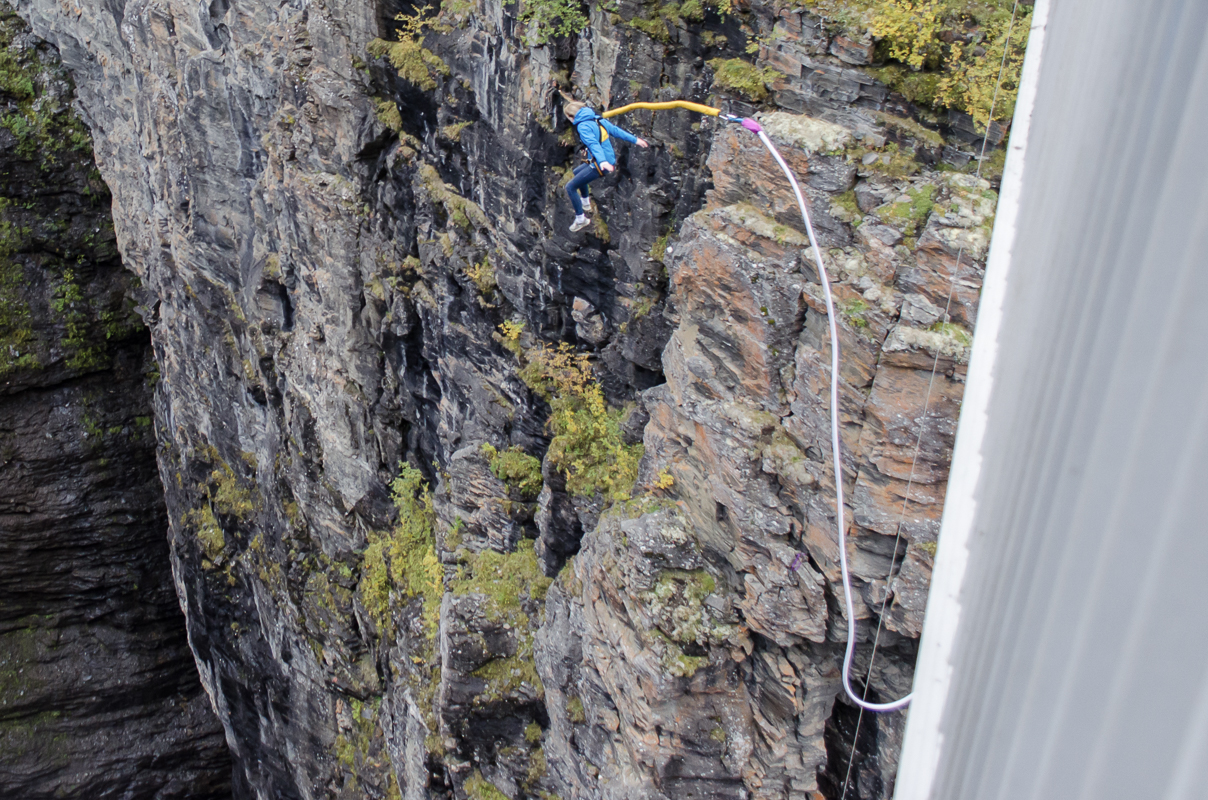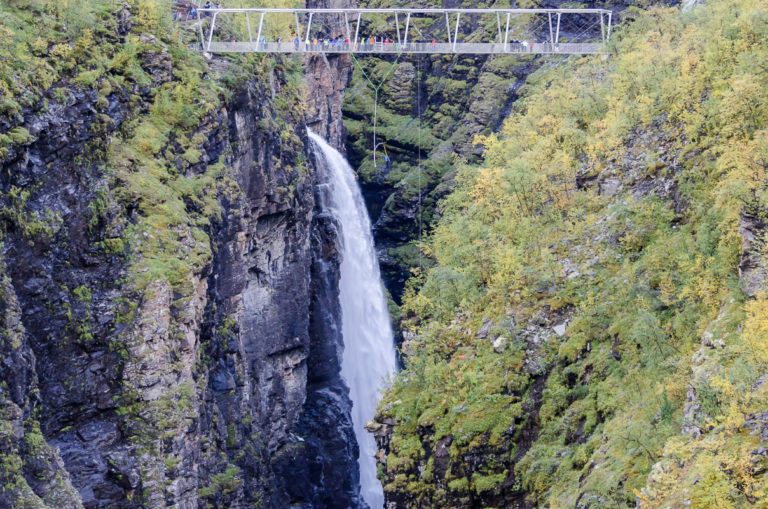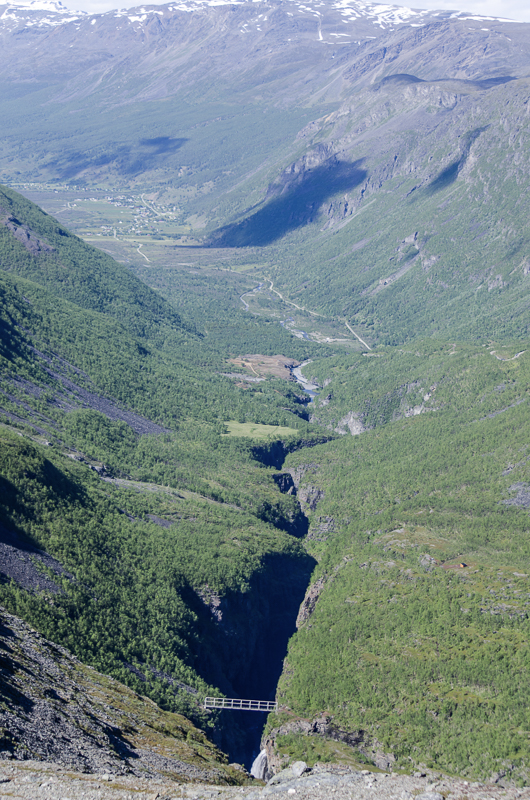A slim, elegant aluminium bridge spanning one of the deepest ravines in Northern Europe has opened up new vistas in the Kåfjorddalen valley, binding together existing paths and beautifying the landscape in a network of walking trails, bordered by old mining relics, between the Arctic Ocean and Finland’s highest mountain.
The Gorsa-juvet ravine up in the Kåfjorddalen valley is among the deepest in Northern Europe. From the south side of the ravine, the Gorzi-fossen waterfall plunges 140 metres in free fall into the depths. This spectacular landscape has now become accessible to most people with the building of a pedestrian aluminium bridge right above the waterfall. In addition, the bridge binds together two networks of tracks for walking, hiking and mountain biking into one of the most attractive and easily accessible areas for outdoor activity in this part of Norway.
A jewel in the landscape
The bridge is 53 metres long and constructed in aluminium. After being cast in Austria, it was lifted into place by helicopter in a single operation.
What you jump into?
At the end of the Ice Age, a huge glacial meltwater river thundered down from the inland ice through the Kåfjorddalen valley and out to sea. Boulders, stones and gravel carried in the river exploited weaknesses in the bedrock, gouging out the Gorza-juvet ravine, which is up to 600 metres deep and stretches 4-5 kilometres along the Guolasjohka river.

Bungee jumping in Lyngenfjord
Our providers have a lot of experience with bungee jumping and safety


